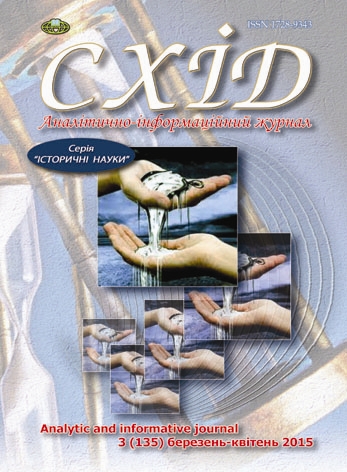Armenian narrative XIII - early XIV ages as a source of history Second and Third Crusades
DOI:
https://doi.org/10.21847/1728-9343.2015.3(135).46086Keywords:
Armenian narratives, Crusades, sourceAbstract
This article analyzes the evidence of Armenian historians XIII - early XIV ages regarding events of Crusades 1147 - 1149 years and 1189 - 1192 years; defined the specific tradition of writing history, which was characterized by medieval Armenian chronicler. Based on the study of sources found confidence level posts Armenian narratives, their degree of objectivity and informative.
Analysis of evidence of medieval Armenian authors, relating to the eastern casing written sources on the history of the Crusades, allows us to trace the evolution of the views of historians who lived and worked during the given period of source; allows you to compare the degree of reliability and the level of informativeness Armenian and Latin works, figure out the contradictions and mutual interdependence in conceptions of authors, which were inherent in radically different traditions historiography.
Armenian historians, like other eastern authors (eg, Byzantine, Arab, Syrian, etc.), starting to write his works do not set ourselves as the primary objective laudatory description crusading movement, and considered it solely within the native, Armenian history. Given these facts, not surprisingly, the outline of the Second and Third Crusades covered them fragmented, and many episodes of the military-religious actions have a brief compilation is limited actual dry character.
Despite certain qualitative characteristics of medieval Armenian narratives are predominantly auxiliary character in the coverage of various aspects of the history of the Crusades mid - late twelfth century. Because we have not opened any other pictures of military-religious actions, opposite the west. Their number is not enough in order to reflect the full fabric of the events of the second and third military campaigns in Western chivalry East and outshine an enormous amount of information in their Latin chroniclers, even in its most subjective, biased and insufficiently critical.
Downloads
References
Vardan Velikiy (1861), General History of Vartan Velikiy, Moscow, pp. 153, 165-169 (rus).
Dmitriyev G. (1966), Istoriko-filologicheskiy zhurnal, № 3, Leningrad, pp. 281-285 (rus).
Dmitriyev G. (1968), Istoriko-filologicheskiy zhurnal, № 1, Leningrad, pp. 259-265 (rus).
Dmitriyev G. (1971), Istoriko-filologicheskiy zhurnal, № 3, Leningrad, pp. 138-148 (rus).
Zaborov M. (1966), Introduction to the historiography of the Crusades, Nauka, Moskow, 384 p. (rus).
Zaborov M. (1968), Istoriko-filologicheskiy zhurnal, № 3, Moscow, pp. 153-162 (rus).
Zaborov M. (1971), Historiography of the Crusades (Literature XV – XIX centuries), Nauka, Moscow, 385 p. (rus).
Zaborov M. (1977), History of the Crusades in the documents and materials, Vysshaya shkola, Moscow, 272 p. (rus).
Stasyulevich M. [editor] (2001), History of the Middle Ages: The Crusades, Vol. 3, Poligon, St. Petersburg, 592 р. (rus).
Gandzaketsi Kirakos (1976), History of Armenia, Nauka, Moscow, pp. 89-90, 112-114 (rus).
Sparapet Smbat (1974), Annals, Ayastan, Yerevan, pp. 44-120 (rus).
Ayrivanskiy Mekhitar (1869), Chronological history compiled father Mehitarom, Vardapet Ayrivankskim, St. Petersburg, p. 409, 412 (rus).
Recueil des historiens des croisades. Documents armeniens (1869-1906), Paris, Vol. I, 992 p.; Vol. II, 1310 p. (french).
Downloads
Published
How to Cite
Issue
Section
License
Copyright (c) 2015 Vitaly Litvinenko

This work is licensed under a Creative Commons Attribution-NonCommercial-NoDerivatives 4.0 International License.
1. Authors bear responsibility for the accuracy of facts, quotations, numbers and names used.
2. Manuscripts are not sent back.
3. The publisher does not always agree with the authors' opinion.
4. The authors reserve the right to authorship of the work and pass the first publication right of this work to the journal under the terms of a Creative Commons Attribution-NonCommercial-NoDerivatives 4.0 International License. This license allows others to distribute (copy) the published work for non-commercial purposes, provided there is mandatory attribution to its authors and a link to the first publication in our journal.
5. The authors have the right to conclude separate supplement agreements that relate to non-exclusive work distribution in the form in which it has been published by the journal (for example, to upload the work to the online storage of the journal or publish it as part of a monograph), provided that the reference to the first publication of the work in this journal is included.

